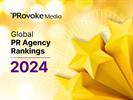Paul Holmes 19 Feb 2024 // 4:36PM GMT

How much responsibility does a public relations firm have for ensuring that the statements it issues on behalf of clients are factually accurate? And how, at a time when consumers are inundated with disinformation and junk science, can a public relations firm be expected to evaluate controversial scientific claims?
These are questions that occurred to me—not for the first time—as I read through The Guardian’s account of a new report produced by fossil-fuel watchdog group the Center for Climate Integrity, which presents some compelling evidence that plastic recycling is not the responsible waste management solution the industry has been promoting for the past several decades.
More troubling, the report suggests that the plastics industry has known for most if not all of that time that “does not solve the solid waste problem,” to quote one industry source.
Reading through the report itself—even knowing that it comes from a source with an ax to grind against the fossil fuel business—it is hard not to hear echoes of the story told about the tobacco industry in books like “Merchants of Doubt” by Naomi Oreskes and Erik Conway, or climate change denialists in “Doubt Is Their Product” by David Michaels.
Those books provide well-documented evidence that leaders in first the tobacco industry and later the oil production business were well-aware of the harmful impact of their products long before they shared that information with the public—and indeed, that they knew the information they were sharing with the public was not only incomplete but downright false.
In the case of the tobacco industry in particular, there is compelling evidence that at least some of the communications professionals were well aware of what the industry’s own scientists had discovered. Specifically, a December 1953 meeting between the representatives of major tobacco companies and PR legend John Hill (of Hill & Knowlton) laid the groundwork for one of the most deceptive and destructive public relations campaigns of all time.
In short, the industry created a template that involved finding experts who were prepared—whether for financial or ideological reasons—to sow doubt about the scientific orthodoxy; assailing the integrity of academics and industry critics; and leveraging the media’s susceptibility to charges of bias in order to prevent or delay regulations that would have hurt the sales of their products and saved countless lives.
That campaign would also lay the foundation for the kind of disinformation that continues to delay action of climate change and has since been used against corporate America by the anti-vaxxer movement.
But not every case in which public relations professionals have presented inaccurate—even distorted—science is quite so clear cut.
In 2016, for example, the top public relations award at Cannes went to a campaign that purported to show the benefits of a Swedish family switching to an all-organic diet, but by focusing on chemicals found in certain pesticides and completely ignoring the different set of chemicals found in organic pesticides—an approach that was at best misleading and at worst completely dishonest.
There’s no reason to believe the PR people involved in this campaign understood just how misleading the selective presentation of science was. After all, they were sufficiently proud of their work to submit it for the scrutiny of an awards jury.
Which brings us to all the work public relations firms have done to promote plastic recycling initiatives around the world, much of which has been submitted to and even won PR and advertising awards (including this site’s own SABRE Awards). Some of those campaigns were paid for by the plastics industry, or by industries that use plastic packaging, while others were sponsored by government and even by NGOs. But my guess is that most of the PR people involved in these campaigns believed they were doing something good.
There’s no question that public relations professionals are increasingly being asked to communicate controversial scientific information, in areas ranging from healthcare to nutrition to the environment—not to mention the upcoming explosion of AI-related communications.
And let’s be honest about this: most public relations people are not scientific experts. Yes, there has been an increase in the number of healthcare communications professionals with medical qualification; yes, there are some nutritionists in the food and beverage sector; some energy industry PR people have environmental science or natural science education. But these subject matter experts are outnumbered—understandably—by those with PR, communications, journalism, or other liberal arts degrees.
But lack of scientific expertise can no longer serve as a get-out-of-jail-free card for PR agencies caught up in controversy. And I would like to think that most agencies would prefer not to be caught spreading lies for their clients. So some basic degree of fact-checking is necessary to protect an agency’s reputation and to fulfil a communicator’s obligation to the people with whom he or she is communicating.
That’s why I think every agency ought to have either an in-house chief science officer or, if that isn’t viable, an on-call science advisor, someone whose job is to review the scientific claims an agency is asked to make on behalf of its clients.
There is so much disinformation out there right now that adding to it—even inadvertently—can not only damage an agency’s reputation, and feed public cynicism about how public relations contributes to disinformation, but also create real public health risks. As trust erodes in business, media, and science, an extra layer of protection is a good investment.



































.jpg)






























